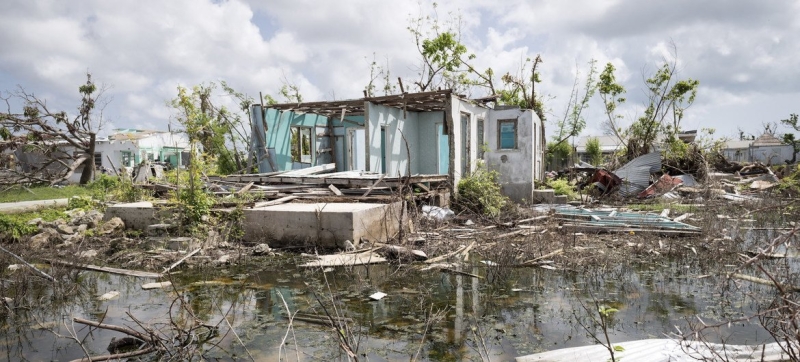- CA Yunus pays homage to Liberation War martyrs on Victory Day |
- Bangladesh capital market extends losing streak for second day |
- Bangladesh celebrates Victory Day Tuesday |
- 'Different govts presented history based on their own ideologies': JU VC |
True Disaster Cost 10-Time Higher Than Past UN Estimates

A scene of devastation in the wake of Hurricane Irma, which struck Antigua and Barbuda in the Caribbean region in 2017. UN Photo/Rick Bajornas
As climate disasters increase in intensity and frequency, the real cost of their impact is far more severe than previously believed—ten times higher, in fact. This alarming revelation comes from a new report released Tuesday by the United Nations Office for Disaster Risk Reduction (UNDRR).
According to the report, while current estimates suggest that natural disasters cost the global economy approximately $200 billion each year, this figure is only a small fraction of the true financial toll. The actual cost, UNDRR says, is closer to $2.3 trillion annually, when broader and long-term consequences are taken into account.
“The world has been chronically underestimating and undermonitoring the full impact of disasters on sustainable development,” said Jenty Kirsch-Wood, head of global risk analysis at UNDRR.
Disasters—ranging from earthquakes, floods, and hurricanes to landslides and wildfires—are traditionally assessed based on immediate damage to infrastructure. However, this narrow lens ignores the long-term ripple effects they have on healthcare, education, housing, and employment.
The loss of educational years, disrupted healthcare services, reduced job opportunities, and increased national debt all contribute to a much deeper and more widespread impact, especially in developing and vulnerable nations.
“We’re not just talking about damaged roads and collapsed buildings. We're talking about lost futures,” Kirsch-Wood said.
The UNDRR report also sheds light on the mounting risks future generations face. A person born in 1990 has a 63% chance of experiencing a catastrophic, once-in-a-century flood. For a child born in 2025, that chance jumps to 86%, reflecting the dramatic rise in climate-related hazards due to global warming.
These disasters are not evenly distributed. They hit vulnerable countries the hardest, often destroying years of development gains in a matter of hours.
In the past 20 years, global disaster losses have doubled. Between 2014 and 2023, disasters displaced nearly 240 million people. China and the Philippines each recorded over 40 million displaced, while India, Bangladesh, and Pakistan each saw between 10 and 30 million.
In 2023, North America suffered the highest absolute economic losses from disasters—$69.57 billion—but this amounted to just 0.23% of its GDP. In stark contrast, Micronesia lost only $4.3 billion, yet this figure represented an astounding 46.1% of its GDP, demonstrating the disproportionate burden borne by smaller, less resilient economies.
“This is leading to an unsustainable and unsupportable humanitarian model,” warned Kirsch-Wood. “The current response system is overwhelmed and underfunded.”
UN Secretary-General António Guterres echoed the report’s findings, calling the figures “eye-watering” and warning that unless bold preventive measures are taken, the costs—both human and economic—will continue to spiral upward.
“But the good news is, we know what works. By investing in disaster risk reduction and prevention, we can save lives, protect livelihoods, and promote sustainable development,” said Guterres.
The report calls for greater investment in proven resilience tools, including: Flood protection infrastructure, early warning systems, scientific land-use planning, community-based preparedness and climate-resilient building codes
Such strategies can dramatically reduce future damage and even spur local economic growth. For instance, riverbank communities equipped with planning tools and protective systems not only experience fewer losses but also thrive economically.
UNDRR also stressed the critical role of the private sector in closing the “protection gap” that leaves many countries exposed to repeated shocks. Private investment in risk reduction and insurance could alleviate pressure on public budgets and support faster, more sustainable recovery.
“The challenge now,” Kirsch-Wood said, “is to align our financing systems and use both public and private investments to ease the burden on governments and build long-term resilience.”
The UNDRR report presents a stark choice: continue on the current path, facing rising costs and suffering, or invest now in smarter, coordinated disaster prevention.
As the planet warms and extreme weather events become more intense, this report offers both a warning and a roadmap—a call for urgent action to redefine global priorities and protect future generations from escalating climate-related disasters.

